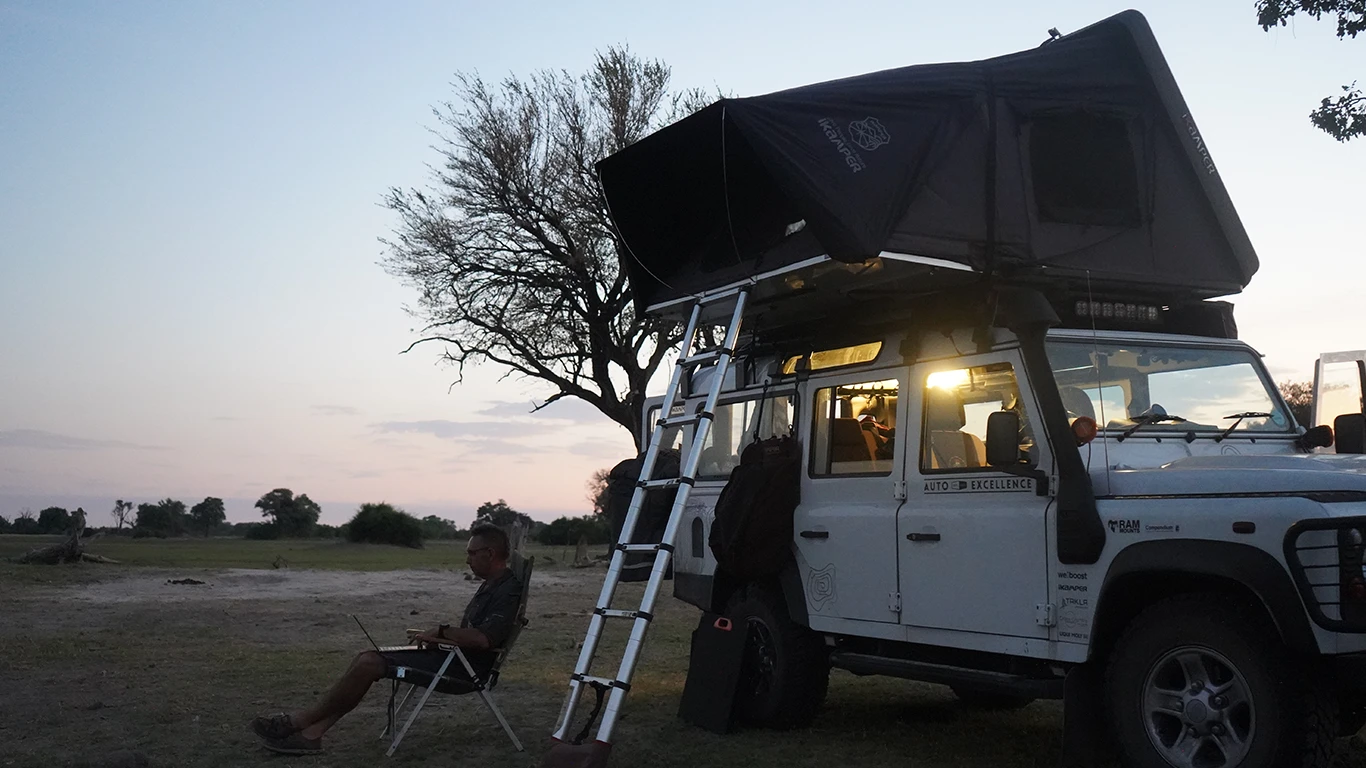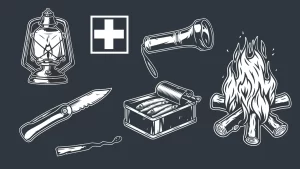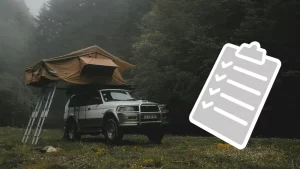Ladders, you may well assume, cannot be complicated. Mostly made from aluminium, you will hardly be given a choice regarding style or action, because, when it comes to rooftop tents, they are already part of the package. Even so, a certain degree of observance cannot be wrong.
I cannot imagine where you will be looking at potential solutions for your rooftop domicile but, once you are ready for closer inspection, wear shoes that are easy to slip in and out of. Not only is this a polite gesture to the salesperson that you won’t be carrying grime onto their mattress, but it will be your first opportunity to let your feet feel the ladder. After all, there may well be times during the summer months when you descend or ascend barefoot.
FIXED OR SEPARATE
If the rooftop tent is either a soft shell or a hybrid, tents that fold out, then you should make sure the ladder is attached to the floor. Not only is the chance of leaving it behind minimised, but the leverage it provides is a huge asset when folding out or packing away the tent.
Ideally, the ladder should have some form of cover to prevent it chaffing on the tent material of a hybrid or the cover of the soft shell.
Hard-shell tents inherently have separate ladders. These can be stowed in the car or on the mattress inside the tent itself. If you are planning on keeping it on the mattress, then make sure that it comes with a pouch so that you don’t end up with sand, or worse, in your bedding.
TELESCOPIC OR SLIDING
Sliding ladders, similar to one you might have in the garden at home for cleaning gutters, are still to be found on some tents, but many manufacturers have adopted the telescopic style. These collapse into small packages which are easy to deploy to quite considerable length. Telescopic ladders usually require two hands to operate.
Regardless of the type of the ladder, the feet should be wide enough to prevent them sinking into soft ground.
RUNGS
First of all, look at the width of the rungs. Even though aluminium is light, some manufacturers try to reduce weight at all costs and that can result in narrow rungs. One reason for testing the ladder without any shoes on.
Are the rungs non-slip? Bare feet and shoe soles can slip if the rungs are wet. Think of yourself and your children.
If the rungs do appear as if they could be slippery, you can buy a self-adhesive grip tape, as used on skateboards, and cut it to size.
HEIGHT
We have already looked at the two styles of ladders available. Now extend the ladder to its maximum and make sure it is long enough to be set at a slight angle for safe ascent and descent respective the height of your car roof—take into account the added height of the roof rack plus some extra for uneven ground.
Remember that with soft-shell and hybrid tents, the ladder also supports the floor when it is folded out.
If the ladder is too short, ask if there are extensions you can purchase separately.
DURABILITY
Aluminum is a durable material. However, extremely light does not necessarily mean strong. Check the weight rating of the ladder.
As far as soft-shell and hybrid tents are concerned, check the ladder’s mounting points on the floor. They need to have ease of movement for the ladder to swing out and be sturdy enough to withstand the forces imposed upon them when pulling or pushing the floor into position when opening or packing away the tent.
SUMMING UP or TL;DR
In essence, ladders are not a difficult topic. Just pay attention to key factors such as the weight rating, the overall length/height, are the rungs comfortable enough to tread barefoot, do they run the risk of being slippery when wet, and finally, is it strong enough to stand the test of time.







